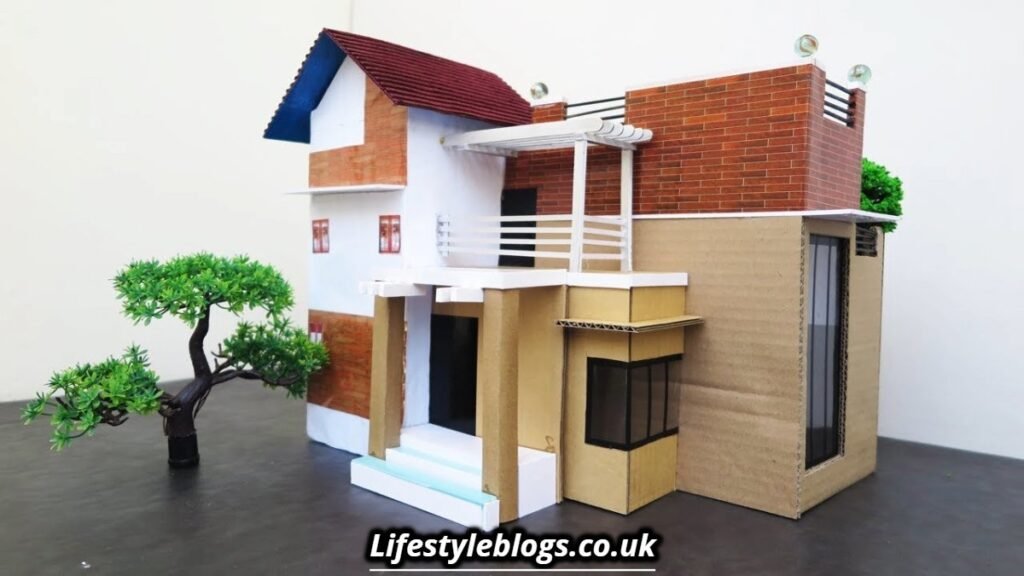Introduction
Can cardboard really replace concrete, steel, or wood? You’ll be surprised. For instance, in 2020 the Fibre Box Association noted a 9% surge in box shipments, and corrugated packaging was 96% recycled in 2018—proof that the material is already well-tested even before it hits construction sites.
A Brief History of Cardboard in Architecture
Shigeru Ban’s work continued the legacy of cardboard building that began with Buckminster Fuller’s 1944 prototype. Ban also used Formica and laminated plastic in early versions to improve water/fire resistance.
There’s also ancient precedent: Japanese shōji screens and Chinese folding screens (400 BCE) featuring lightweight wood-and-paper constructions—an early form of modular, foldable architecture.
What is Construction-Grade Cardboard?
Modern engineered cardboard includes honeycomb boards up to 73 mm thick, sandwiched with MDF for acoustic and structural strength.
Mid-20th-century forms—like cardboard tubes used as pilotis for concrete—are now repurposed by Ban in water-resistant paper-tube designs.
Advantages of Cardboard in Construction
Materials like Formica or laminated coatings now help cardboard meet building code standards.
This shows how robust lifecycle analysis and circular design can turn a simple sheet into a high-performance architecture material.
Strength in Simplicity: Is Cardboard Structurally Reliable?
Projects like the Packed Pavilion (Shanghai Expo, 2010) used 409 truncated cones and 28 corrugated layers to create domes—showing how geometry can replace mass.
And Michael Hansmeyer’s Subdivided Columns stack 2,700 cardboard slices into nine-foot algorithmic sculptures far beyond what a 3D printer could do in 2011.
Thermal and Acoustic Performance
Designers like Martti Kalliala and Esa Ruskeepää created the Mafoombey Acoustic Space (Finland, 2005): a corrugated, sound‑absorbing pod using cardboard’s natural insulation.
Emergency and Temporary Architecture with Cardboard
Shigeru Ban’s paper‑tube shelters in Rwanda, and permanent structures like the Hualin Paper School (China) and Paper Concert Hall (Italy), demonstrate the adaptability of engineered cardboard in varied climates.
Modern Projects
Frank Gehry’s Easy Edges furniture line (1970s) brought cardboard to high design; while the Origami School Building (2002, UK) exploited folding techniques for architectural form.
Spotlight: Wikkelhouse
Wrapped in wood panelling, these modular homes offer 100‑year lifespans, dismantlability, and uses like beach cottages or office pods—an exemplar of cardboard’s scalability.
Five Groundbreaking Examples
The Christchurch Cardboard Cathedral (2011) features A‑frame geometry on 20‑foot shipping containers.
Cardboard House (2004), part of Australia’s “Houses of the Future,” used six sustainable materials to build a minimalist emergency shelter.
Overcoming Challenges
Advanced treatments like fire‑retardant coatings, wood wrapping, and laminated plastic tarps now help cardboard meet LEED/BREEAM standards and 95+ fire protection ratings.
Environmental Impact and Sustainability
According to R.S. Hughes, cardboard can be downcycled up to eight times before composting—releasing stored carbon—so recycling is key.
These techniques support carbon-neutral architectures and low-VOC adhesives.
Changing Perceptions and Adoption
Projects like Narelle Yabuka’s Cardboard Book (Singapore) helped spread the idea of cardboard as democratic design.
Pavilion designer Min-Chieh Chen, along with Dominik Zausinger & Michele Leidi, advanced cardboard’s potential in raw, geometric art at the 2010 expo.
Industry Integration and Growth
You’ll now find prefab cardboard walls, modular fittings, and smart insulation systems. Governments offer tax credits and green subsidies, while academia fosters material testing for fungus resistance, humidity control, and load-bearing capacity.
Future Outlook
Look ahead to 3D printing, smart sensors for insulation monitoring, solar-reflective coatings, and urban pop-up architecture like temporary retail pods or disaster response shelters.
Conclusion
Cardboard has come full circle: from throwaway packaging to durable, certified, smart building systems, bridging creativity with sustainability. It truly is a revolutionary foundation material.
